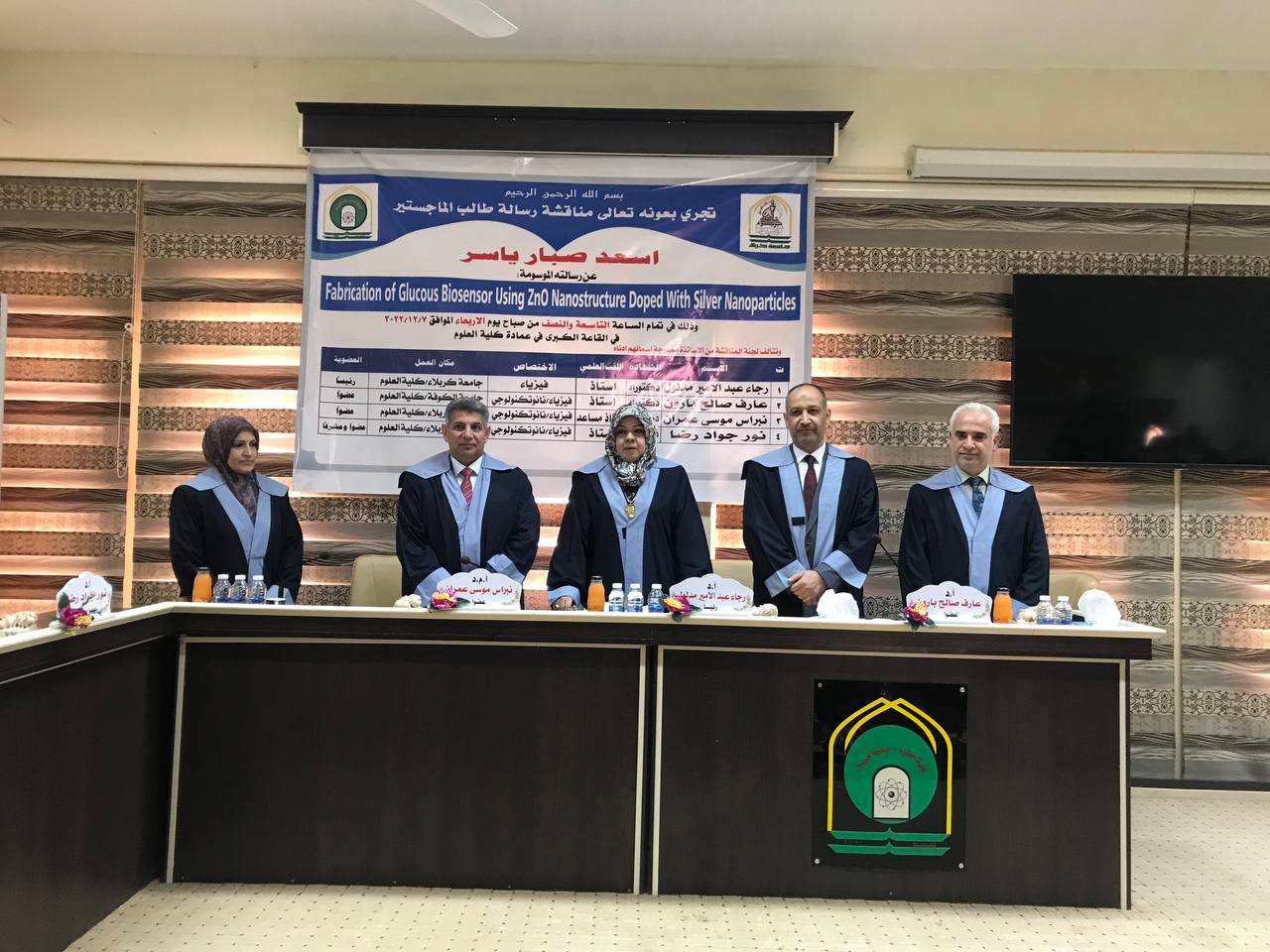A master’s dessertation in the College of Science, University of Kerbala has discussed the manufacture of a sugar biosensor using zinc oxide nanostructures coated with silver nanoparticles.
The purpose of the thesis is to prepare zinc oxide (1D ZnO) coated with silver nanoparticles (Ag Nps) and manufacture a biosensor highly sensitive to glucose concentration in the human body (1D ZnO) coated with silver nanoparticles (Ag Nps)
The thesis was concluded when coating zinc oxide nanoparticles with silver nanoparticles using a dip coating system to use it as a biosensor for glucose. It was found that with increasing the number of dipping times, the thickness of the ZnO seed layer increased, as the surface became smoother and its electrical properties improved. As for the optical properties, the transmittance decreased slightly with a decrease in Energy gap value. In contrast, the zinc oxide nanobars obtained a greater density and length due to the increase in the number of dipping times, in addition to an improvement in the electrical properties, a decrease in the transmittance, and an improvement in the energy gap values, which gradually decreased, and when coating ZnO NRs with Ag NPs.The optical properties were improved by increasing the transmittance of the S9 sample, reducing the energy gap, increasing the sensitivity of the electrode, and reducing the detection limit, and it was found that the best sample is the S9 sample, as a result of the compatibility of the concentration of silver nanoparticles with the percentage of zinc oxide, improving electron transfer, improving its electrical properties, and cyclic voltage tests, and the results were consistent with What has been planned. In addition, it is important for the detection of glucose in biological systems, and the manufactured electrode can be used as a sensor for glucose in fluids that stimulate Tui on human serum because the active medium used in the experiments is similar in properties to human blood.






























































